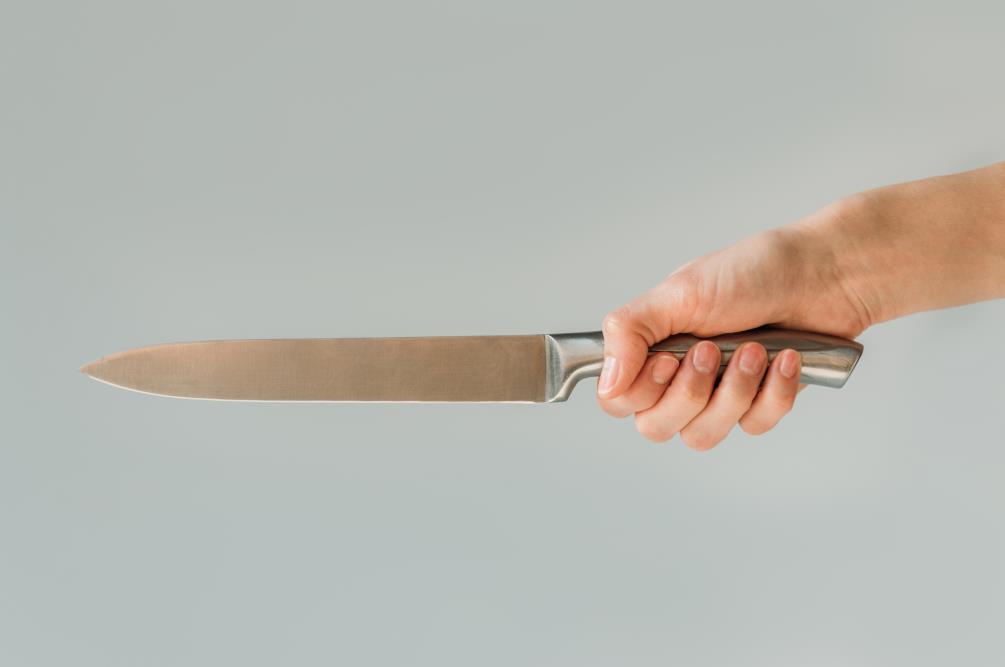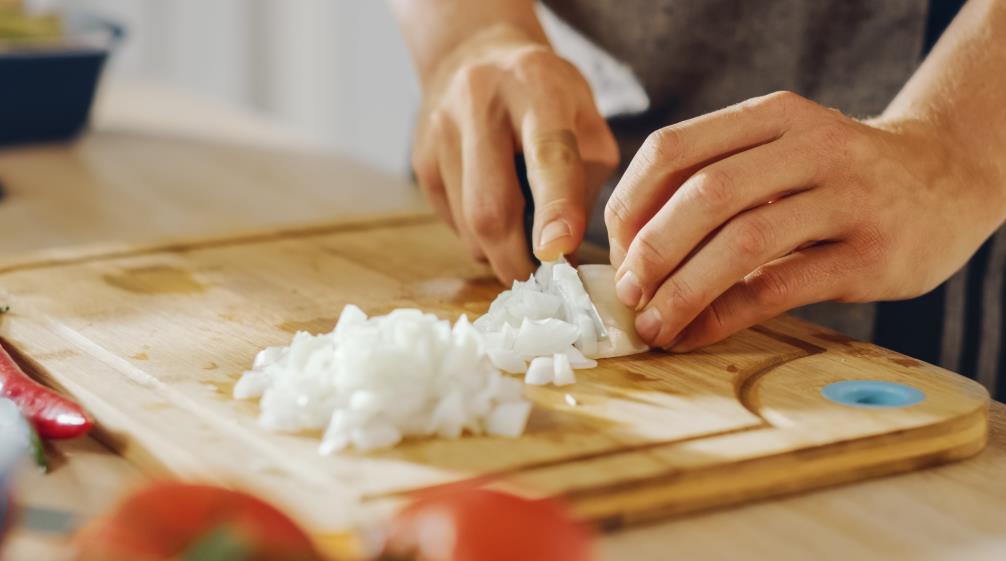Most traits of a knife are easy to see just from a quick assessment. Things like blade length and thickness, the materials a knife is made out of, and the style of blade, can quickly tell you what a knife is designed to do, and what jobs it should be used for around your kitchen.
But there’s one vital trait that is very difficult to judge from looking at a knife. But it’s something that you’re going to notice every time you pick it up to use it.
The knife balance.
Table of contents
What is a knife balance point, and why is it important?

The balance point of a knife is the point where the weight will naturally rest when the knife is held.
A knife can have a wide variety of balance points, ranging from heavy, thick bladed meat cutting knives that put all the weight at the front of the blade, to thin, delicate boning knives that are flexible and incredibly easy to handle.
The reason knife balance matters is because an unbalanced knife is much more awkward to hold and takes a lot more effort to make every cut. This might increase the risk of the blade slipping, as well as potential injuries for you or people around you. Finally, holding a knife in an awkward grip can lead to long-term aches, pains and pressure points.
On the other hand, a well balanced knife takes a lot of the effort out of cutting. You’ll find a knife that’s correctly balanced for its role to be easier to hold, more precise, and much simpler to cut with. This saves you time and energy in the kitchen, and also cuts down on the risk of accidents through having to use excessive force or an awkward cutting angle.
How do you know if a knife is balanced, and what is the best balance point?
There is no ‘One Best Balance Point’ for knives. It can vary by a large margin, depending on the design and quality of knife you’re using, and the job you’re using it to do.
A great example is cleavers. A cleaver is a big, heavy knife that’s designed to chop through meat and bone, and because of this, cleavers benefit from having a big, heavy blade that puts all of the weight, and the knife’s point of balance, far in front of the handle.
All of that front-loaded weight changes the swing of the knife. A front-weighted knife almost swings like a small axe, which massively increases the force you can put into each individual cut, and makes it much easier to slice into big, thick joints of meat.
However, the majority of kitchen knives will have a balance point slightly behind the bolster, at the point where the blade meets the handle. This puts the point of balance exactly where your grip is, which makes the knife simple to move around, makes it easy to keep in the hand, and give you a lot more control and safety over the point and edge.
Finally, long, thin knives that are used for filleting and deboning should have their balance further back in the handle. This type of knife is designed for maximum mobility, so having the weight firmly in your grip gives you the maximum amount of control.
Handpicked for you
True cutting power in the palm of your hand
What determines the balance point of a knife?

A knife’s balance point can be affected by a number of things, which can include:
The blade
A larger blade is likely to be thicker and heavier, so will normally weigh more. This pushes the balance of the knife forwards, which will increase the force you can exert when chopping or mashing, ideal for big, heavy knives. But a heavier blade with a lot of forward balance decreases the amount of control you have and might make smaller, more dextrous movements more difficult.
The tang
A knife’s tang is the metal section that extends into the handle, anchoring the parts of the knife together. A longer tang tends to make a knife stronger, but increases the overall weight, as well as shifting the balance back towards the handle.
The handle
Knife handles come in as many different shapes, sizes, weights and materials as there are types of knife.
It sounds obvious, but a bigger, longer handle made from a heavier material will shift the weight of balance towards the back of the knife. When you’re buying a knife, you should also consider the overall size of the handle compared to the blade, and also to your hand, as all of this is going to affect your ability to comfortably hold and use it.
The bolster
The bolster is the point on a knife where the blade meets the handle. It’s normally a little thicker than the blade, which adds strength to the knife itself, as well as adjusting the balance point and helping to guard your hand.
A larger, thicker bolster will make a knife heavier, as it’s a reasonably large piece of solid metal, but any professional knife manufacturer will have taken the weight into account, and used the size and shape of the bolster to help adjust the balance of the knife.
How to find the balance point of a knife

Once you have a knife in your hands, there are two main methods for finding the point of balance:
For smaller knives, the best method is to try and balance the knife on your finger, like a see-saw, using the steps below:
- Extend your index finger
- Place the knife handle on your finger, at the point closest to where the handle meets the blade
- Use gentle pressure from your other hand to keep the knife balanced, if necessary
- The point of balance is in the direction that the knife wants to lean
For larger or sharper knives that are harder to balance on one finger, you can find the balance using a pinch grip method:
- Hold the knife as close to the center as possible, using a gentle pinch grip with your index finger and thumb, grasping the reserve of the blade, so it hangs under your hand
- It’s best to hold the knife over a cutting board, in case of droppage
- Use a grip that is light enough that the knife can freely rotate in your hand
- Watch which direction the knife tilts to work out whether it’s blade or handle heavy
- You can also adjust your grip towards the direction the knife is tilting, try try and precisely locate the center of balance
The direction that the knife tilts is the balance, this applies to both methods.
A knife that wants to tilt towards its handle when balanced is handle heavy, and tends to be more dextrous and easy to maneuver.
A knife that wants to tilt towards its blade when balanced is blade-heavy, and tends to have a thicker, stronger blade that is more suitable for heavy work.
Final thoughts
The way a knife is balanced can have a huge impact on how it feels to use and whether it feels right in your hand.
Cleavers, boning knives and other specialist knives need a particular balance point, in order to effectively do their job.
However, for most jobs, the best balance for chef’s knives and other smaller, general use blades is slightly handle-heavy; or, to have the point of balance slightly set back behind the bolster of the knife, as this will make the knife simple to hold and easy to handle.
If you’re looking for a high-quality, well-balanced chef’s knife, check out our selection today.












